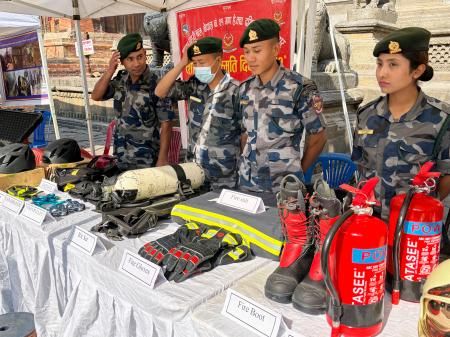Nepal Earthquake: Lessons Learned and Future Preparedness
The devastating 2015 Nepal earthquake, measuring 7.8 on the Richter scale, left an indelible mark on the nation, claiming thousands of lives and causing widespread destruction. While the physical scars are slowly healing, the experience offers invaluable lessons for disaster preparedness and resilience, not just for Nepal but for earthquake-prone regions worldwide. This article examines the key takeaways from the tragedy and explores how these lessons can inform future strategies for mitigating earthquake risks.
Understanding the Devastation: A Recap of the 2015 Nepal Earthquake
The April 25th, 2015, earthquake and its subsequent aftershocks triggered a humanitarian crisis of immense proportions. The impact extended beyond immediate casualties, encompassing:
- Widespread Infrastructure Damage: Thousands of homes, schools, hospitals, and historical monuments were reduced to rubble. The lack of earthquake-resistant building codes became tragically apparent.
- Landslide Triggering: The powerful tremors destabilized mountainous terrain, leading to numerous deadly landslides, further compounding the destruction.
- Economic Disruption: The earthquake severely impacted Nepal's already fragile economy, disrupting tourism, agriculture, and other vital sectors.
- Humanitarian Challenges: The remote location of many affected areas hampered rescue and relief efforts, highlighting the need for efficient logistical planning in disaster response.
Key Lessons Learned: Building a More Resilient Nepal
The Nepal earthquake served as a stark reminder of the importance of preparedness. Several crucial lessons emerged from the catastrophe:
1. The Critical Need for Earthquake-Resistant Construction:
The earthquake exposed the vulnerability of traditional building techniques. Moving forward, implementing and enforcing stringent building codes, incorporating seismic design principles, and promoting the use of earthquake-resistant materials are paramount. This includes:
- Investing in education and training: Educating builders and architects on modern seismic design techniques is essential.
- Strengthening building regulations: Stricter enforcement of building codes and regular inspections are vital to ensure compliance.
- Utilizing modern materials: Promoting the use of reinforced concrete and other earthquake-resistant materials can significantly enhance building resilience.
2. Enhancing Disaster Preparedness and Response Mechanisms:
Effective disaster preparedness requires a multi-faceted approach:
- Improved early warning systems: Investing in advanced seismic monitoring and early warning systems can provide crucial time for evacuation and mitigation.
- Strengthened emergency response teams: Well-trained and equipped emergency response teams are essential for efficient rescue and relief efforts.
- Community-based disaster preparedness: Empowering communities through training and education can significantly enhance their ability to cope with disasters.
3. Importance of Post-Disaster Recovery and Reconstruction:
Reconstruction efforts following the earthquake highlighted the need for:
- Sustainable reconstruction practices: Prioritizing environmentally friendly and resilient building materials and techniques is crucial for long-term recovery.
- Community participation in rebuilding: Involving affected communities in the reconstruction process ensures that their needs are met and fosters a sense of ownership.
- Transparency and accountability in aid distribution: Ensuring transparent and accountable distribution of aid is essential to prevent corruption and maximize its impact.
Looking Ahead: A Future Focused on Resilience
The Nepal earthquake was a tragedy, but it also provided invaluable insights into disaster risk reduction. By learning from the past, Nepal and other earthquake-prone regions can build a more resilient future. This involves:
- Continued investment in research and development: Ongoing research into seismic activity and earthquake-resistant technologies is crucial.
- International collaboration: Sharing knowledge and best practices with other countries facing similar challenges is essential.
- Sustainable development strategies: Integrating disaster risk reduction into broader development plans is crucial for long-term resilience.
The 2015 Nepal earthquake remains a poignant reminder of the devastating power of nature. However, by embracing the lessons learned, we can strive towards a future where communities are better prepared to withstand the impact of earthquakes and other natural disasters. This requires a collective effort involving governments, organizations, and individuals, working together to build a more resilient world.
